The Franklin Institute (TFI) is an innovative leader in science and technology learning. The attraction is dedicated to creating a passion for learning about science by offering access to hands-on science education. The most visited museum in Pennsylvania, and one of the premier science centres in the country, it was founded in 1824.
Larry Dubinski, its president & CEO since 2014, has increased attendance by introducing experiences designed to engage diverse new audiences, bringing science into the community, and significantly raising the profile of the Institute while upholding its educational mission.
Under his leadership, the Franklin Institute has grown as a national leader in informal science education through its direction of grant-funded programmes. This includes Leap into Science, GSK Science in the Summer, and Mission2Mars. The programmes have garnered national acclaim for combining impactful programming, professional training, and broad participant reach.
As part of a comprehensive master plan that reimagines the Institute, Abby Bysshe has been appointed chief experience and strategy officer. This a newly created position for The Franklin Institute. It is designed to elevate the overall museum experience for audiences as it prepares for its bicentennial in 2024.
Blooloop caught up with both Larry Dubinski and Abby Bysshe to hear about their strategies and plans for the Institute.
Abby Bysshe and the Franklin Institute
Bysshe, an accomplished leader at TFI since 2016, is working on prioritising the audience experience, elevating the exhibition experience, and fostering a world-class touring exhibition programme while overseeing the experiential and architectural master plan, upcoming strategic planning process, and customer journey planning.
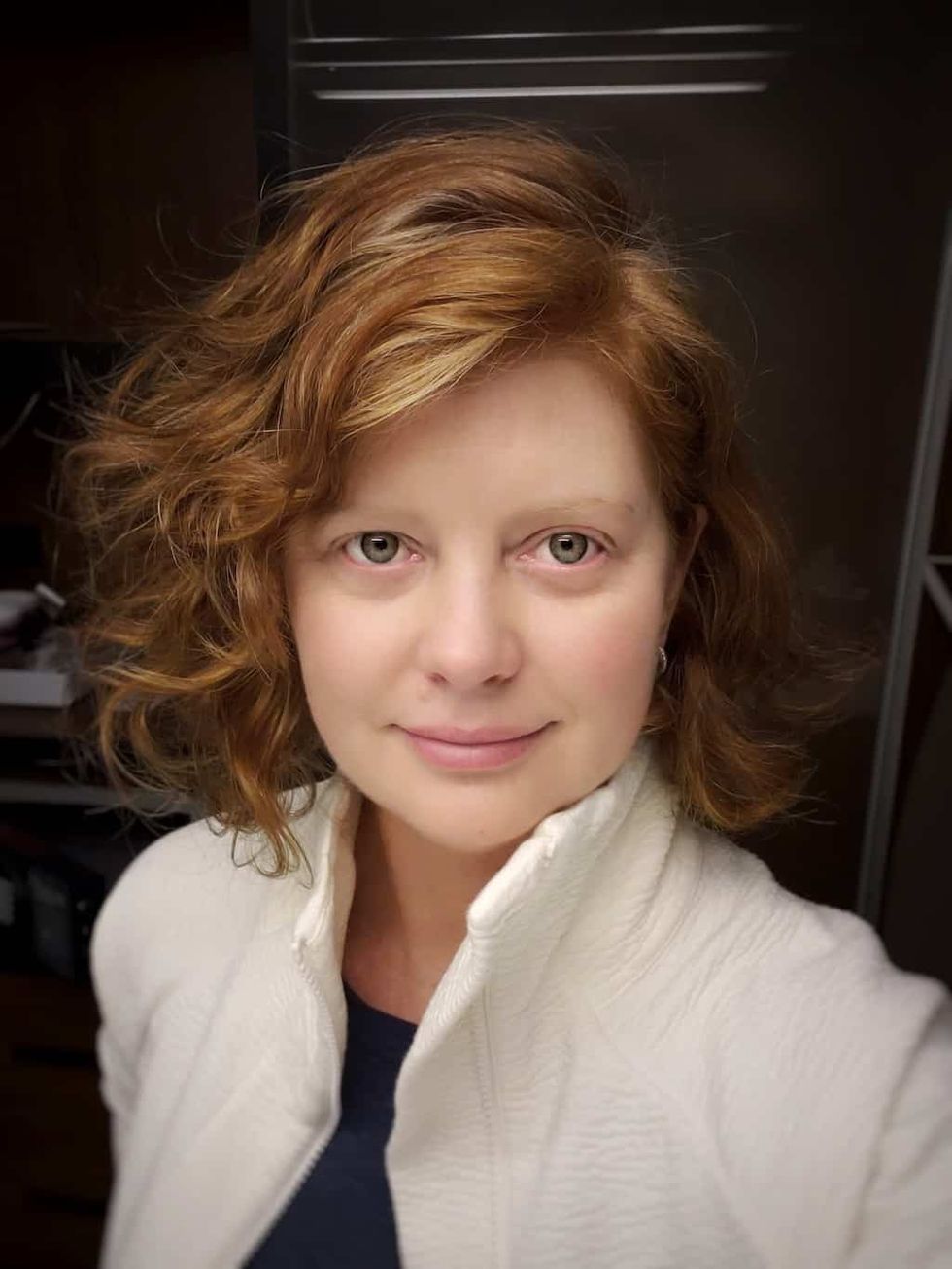
Bysshe has 18 years of experience in innovative museum business modelling and exhibition development and implementation. Previously, she spent seven years in the exhibits department at the National Gallery of Art. Shen then spent five years at National Geographic, overseeing their travelling and digital exhibition programmes, and leading their museum partnerships nationally and internationally.
Over the past six years, she has cemented TFI’s place as one of the premier touring exhibition venues in the US with three consecutive world premiere acquisitions. This includes Crayola IDEAworks: The Creativity Exhibition, Harry Potter: The Exhibition, and the upcoming 2023 exhibition celebrating 100 years of The Walt Disney Company. She has also been developing new museum experiences to further the Institute’s growth trajectory.
A life in museums
“I have been in the museum business for my entire career,” she tells blooloop. “I started early in the art museum world, at the National Gallery of Art in Washington, DC., in their design department.
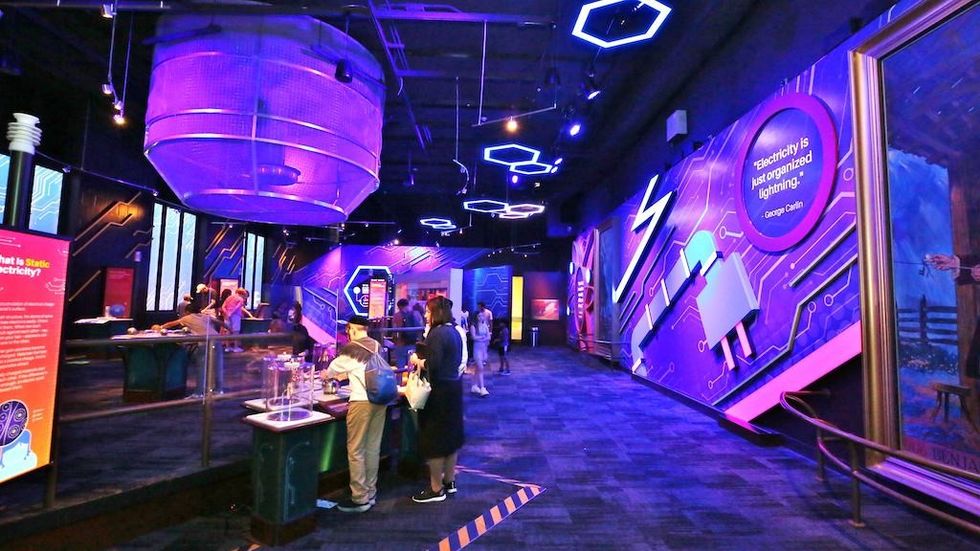
She was there for seven years:
“From there, I really wanted to get into a role that had a more outward-facing look at the museum business. The National Gallery, as a longstanding, government-run institution, wasn't really looking outward to influence what they were doing. So I went to the National Geographic Society, and started building up their touring exhibition programmes.”
At that point, while they had a couple of touring exhibitions, they lacked a formalised programme:
“I came in and built up their national programme, and then made it international. They had many licensees that were constantly trying to do exhibitions for marketing, for customer engagement, and so on.”
Building a programme
Having established that programme, she built it into a museum partnerships role:
“It involved looking across the organisation at content that was coming out of National Geographic, and how that would find its way into the museum community, whether that was speakers or books; everything from exhibits to movies. There was a lot of brand content that wasn't centralised for the museum market.”
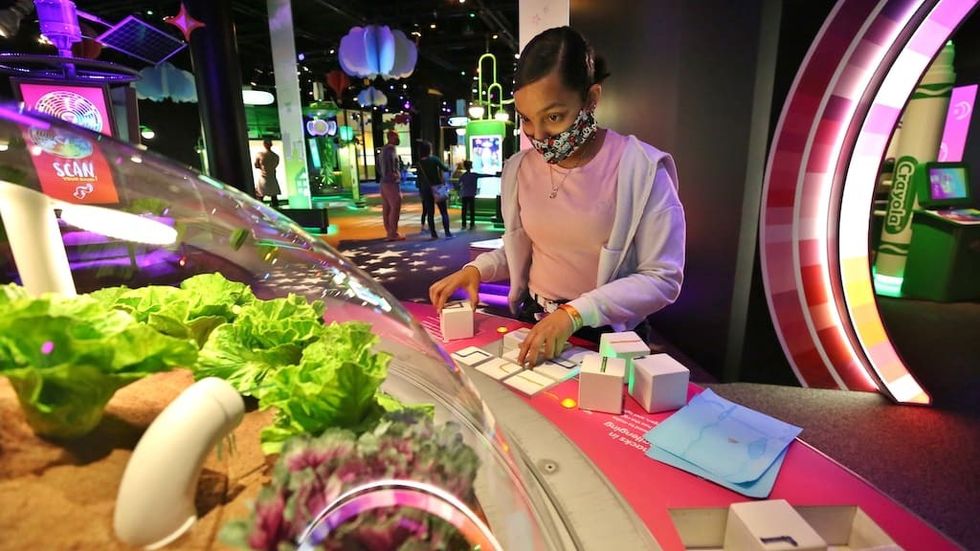
She learned a great deal about museums in the process:
“I learned where the pain points were, what their business models were, how they were struggling with staying relevant and bringing in new content. It was an eye-opening five years into that realm in general. On the flip side of that, I also reported through the themed entertainment branch of National Geographic. So, I was getting a great education on that side of it, as well. It was a nice mix between figuring out mission-driven delivery, as well as the business side.”
Upgrading the Franklin Institute
This route brought Bysshe to science centres:
“They are that place in the middle,” she says. “A lot of them are very revenue-driven, the Franklin Institute being a perfect example of that. You have to sell tickets and create an experience in order to survive. But they are also mission-driven. Science affords itself a broad swath of conversations, from a concept perspective.”
She came to the Franklin Institute in 2016 as its director of business development.
“I was specifically brought on to build out and continue their touring exhibition programme since that was such a big piece of driving attendance revenue for them. That then grew into taking on their experiences department, which grew from exhibits to floor programmes, and has now grown to theatres.”
At this point, the Franklin Institute was heading into a major strategic and master planning process:
“The building really needed to upgrade. You don't often find museums that are reinventing right across the board what their experience looks like. It’s a really awesome opportunity, and I've been having a lot of fun doing it.”
Bysshe is currently leading the development of the newly-announced SPACE exhibit, set to launch in 2023. This is the first in a series of topic areas TFI will explore through six innovative exhibitions, developed over the next five years.
MDSX, a firm that creates immersive storytelling & design for theme parks, live entertainment, museums and attractions, is working with the museum to develop SPACE. This project is taking a fresh approach to design by starting with the community first— working with 150 kids from the Philadelphia school system to hash out the content direction.
Experiences in museums
Over the last decade, the experience market in museums has, she says, exploded.
“I want to drive people to the museum as their first choice. In terms of experiences, you have to compete with what else is out there. I don't think museums are ever going to be as nimble as companies that specialise in immersive experiences. They’re never going to be on the front edge, experientially speaking, in that climate. But I think they can definitely carve their own path, leaning into interactivity, and making sure they're doing stuff that people care about. That’s the biggest piece.”

Seeking to define the function of a museum like the Franklin Institute at this point in time, she says:
“Museums vary quite a bit in what drives their mission. It’s based on their funding model, and on the community that they're in. We are very much a downtown city museum. We have a lot of strong ties to Philadelphia as a city, and the educational system in Philadelphia. Plus, we are also a national museum. We have some great national programmes that take our outreach and our science training across the country with libraries and other museums.”
The appeal of IPs
From an experience perspective, she attributes success to creating experiences that people care about, overcoming any resistance to the science component by leading with the experience.
“People’s response is always, ‘That’s really cool: I didn’t know that’. But you have to get them in the door first,” Bysshe explains. You’ve got to have something really cool that will spark their interest at the outset.”
Touring exhibitions are an effective way of engaging new audiences.
“Museum attendance has been flat for the last decade, but we are seeing, especially with our touring exhibit, that when we introduce a Marvel or a Harry Potter, we’re instantaneously broadening that audience. It’s certainly possible. But you’ve got to figure out the storytelling, content and experience that's going to break that boundary down and draw in those audiences that don't normally engage.
"That's why we do those exhibits. They bring a whole group of people into our building that probably wouldn't come otherwise.”
The Franklin Institute in the digital space
There is, of course, a new audience across the digital space:

“We have definitely been pushing the digital side; COVID, obviously, kicked us into that in a major way.”
To an extent, much of that audience disappeared once people started getting out and were able to go to physical locations. However, Bysshe says:
“We have been pushing into the podcast realm, the video series realm, gaming. We're definitely trying. I will say if play space is competitive, the digital space is quadruple that. It’s a really hard market to compete in with the amount of money we have to dedicate to that space. It’s been going well, but I don't know that we're ever going to really rise to the top from the competition perspective.”
Nevertheless, it is important, in terms of bringing that messaging to new audiences:
“There is a group of people that will never come into the building; that's just the reality. The digital space is a great place to start bridging that gap, from a communication and content perspective.”
Creativity & strategy
Balancing the creative and strategic aspects of her role can, she concedes, be a challenge.
“I feel really lucky in the place that I'm at. I feel really supported by senior leadership and the board - we have a really great board. This means the creative piece feels consistent, to me. There is the strategy piece, there's the business piece, but we're able to give ourselves the space to try stuff, to learn, and to try it again.
"We did a ton of that during COVID. So, we came out of it with learnings that are informing these bigger projects that we're doing.”
Essentially, she feels:
“There’s a really nice balance.”
She is unusual, in that her expertise lies in both the creative and the business and strategic spheres:
“I exist in that world pretty seamlessly. I'm able to balance those two things and figure out how they play off each other. Being able to speak both languages means it’s easy enough to convey to a business person why creativity matters convincingly, and talk persuasively to creatives about why business matters.”
Touring exhibitions at the Franklin Institute
Bysshe is working to position the Franklin Institute as one of the leaders in touring exhibitions.
“That business success really comes from years of relationships; knowing the licensees, knowing the producers. It can be really tough to find content that works for us. Specifically, in the museum world, those touring exhibitions are moving into that black box space. Producers are now taking on all the risk, which used not to be the case.
"In that touring business, museums have always been on the risk side of those business deals, but that is shifting. This means it’s getting increasingly difficult to find inroads into brands that are interested in the museum space as part of their portfolio as a tour.”
However, part of the mid-Atlantic region that includes New York and DC, Philadelphia pulls in huge numbers:
“Producers still find a lot of success coming to us. Often – and the Harry Potter touring exhibition is an example of this – we will be one of the few museums an exhibition goes to. We also have a ton of space. We have 20,000 square feet to work with, which is a rarity in museums. I think we have a really good pitch on why we're a good venue. It's a win-win situation both for us and for the producers that come in. Brands enjoy being associated with a museum like ours, as well.”
Looking ahead
She details plans for the immediate future and in the longer term:
“We are in the process of redesigning all of our permanent experience. We're taking it very strategically, so we're doing one exhibit at a time. We have 11 small exhibits at the moment we're rotating out, and replacing with six larger ones.
"Really, the goal for me is not only an experiential one but also involves setting up the museum for success from a design and infrastructure perspective. Museums have traditionally been built for longevity, so exhibits are 15 to 20 years old. But we just can't do that anymore. We have to design for flexibility, in terms of the show control systems. We need to bring performance into these spaces, and we need to be able to change content cheaply."
"That piece is as big an overhaul as the content and experience perspective. We want to set ourselves up for success. We want to be able to react and be leaner and more relevant as we go forward so that permanent experience starts to get to the same level, and to be as exciting as the touring exhibit business.
"Science will never compete with Harry Potter and Disney. But I'd like to get that permanent experience a little more level set from what we’re seeing experientially coming in from the touring market.”
Ask the audience
A planning process in 2018 clarified what people really wanted to see:
“We did over 25 workshops across the community with businesses kids, teachers, and donors.”
It transpired that the Franklin Institute is seen predominantly as a technology museum:
“We talked through the dinosaurs and the butterflies and so on, but we're really leaning much more into space and robotics. Earth sciences is always in there but much more from a technology perspective; the built environment is in there, with architecture and engineering. We heard really loud and clear from our constituency that this is the place they want us to be.
"It makes a lot of sense with the industry around Philadelphia. There are a lot of medical sciences to tap into and partner with.”
Reaching beyond the Franklin Institute
Leaving the museum’s four walls and going out into the community has always been an area where the Franklin excels, Bysshe says:
“COVID was a big disruption for a couple of years. But we’re starting to rebuild. We have three big outreach programmes.”
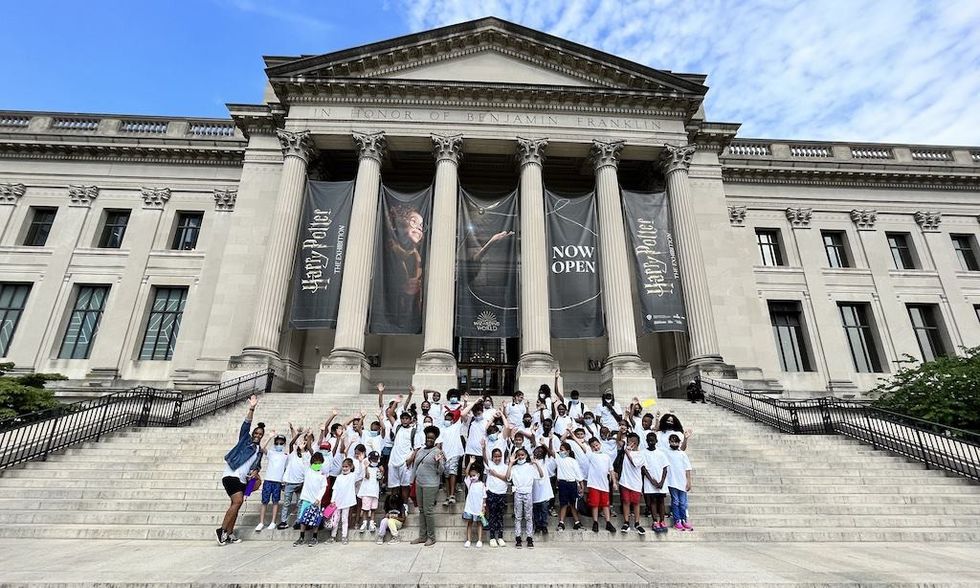
These are Leap into Science, a national program that integrates open-ended science activities with children’s books for young children and their families; GSK Science in the Summer, a partnership with GlaxoSmithKline, and Mission2Mars, a nationwide engagement programme catalysing community partnerships across the country around NASA's space exploration agenda, connecting the public with its Moon-to-Mars missions and learning resources:
“Those big programmes are tried and true. But the community has changed since COVID. So, we’re starting to reassess, and to figure out strategically, with our now reduced staff, how we reengage.”
In conclusion, she comments:
“I'm lucky to be in a museum that is so excited to think differently, and to change. They realise the position that they're in and the business model that we have to support so we can keep doing our mission-driven work. I landed in a really great place at a really great time, and I’m super excited for the next five years. We're about to do some really fun stuff.”
Larry Dubinski
Dubinski is a renowned leader in the museum sector, nationally and internationally. In October 2021, he completed a two-year term as Chair of the Association of Science and Technology Centers (ASTC). His leadership of the 600-member global organisation during the onset of COVID-19 was influential in helping the museums and science centres collectively navigate the pandemic by sharing insight, real-time data, and creative solutions.
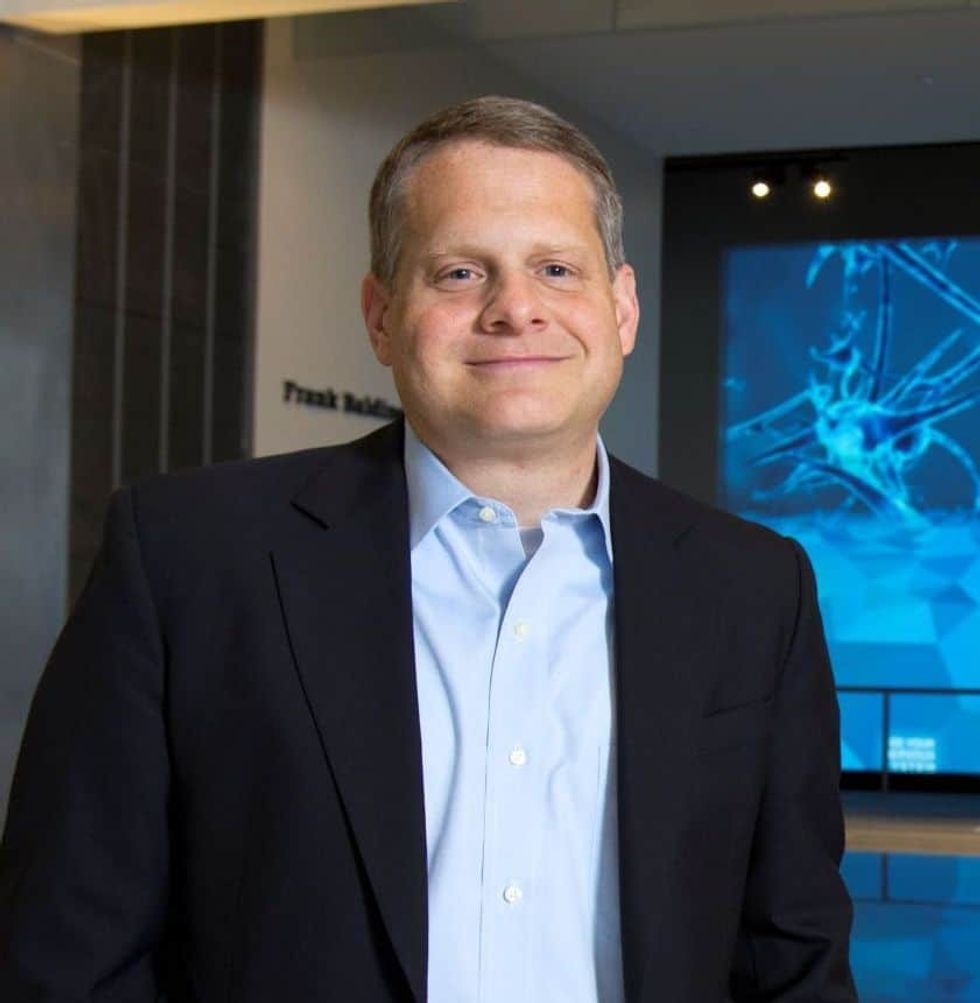
At the Franklin Institute, he has led two major capital campaigns totalling $120 million. These are Turning the Key and Inspire Science, which resulted in the construction and completion of the 53,000 square-foot, $41 million transformative expansion—the Nicholas and Athena Karabots Pavilion in 2014.
In preparation for The Franklin Institute’s bicentennial in 2024, Dubinski is leading the planning, development, and activation of a comprehensive master plan and strategic vision. This aims to transform and redefine the science centre.
“I've been here at the Franklin Institute a long time,” he says. “My path has been all about service to others. Out of college, I went to work for the United Way. That's an international network of over 1,800 local nonprofit fundraising affiliates that helps fund some of the great charities in the community in which we live, work and play.”
Inspiring people through science
This was in Houston, Texas. He then moved to Philadelphia in the mid-nineties:
“I was with United Way here for a little bit. But was then fortunate to come and lead the fundraising effort for the Franklin Institute. At the same time, I went to law school at night.”
Having graduated from law school, he went into the private sector, working for the international law firm Morgan Lewis for four years in business and finance.
“At that point, I worked with a lot of technology and biotechnology companies, some in their startup phase, some through mergers and acquisitions.”
The experience underlined the importance of the role of science and technology in our everyday lives. Additionally:
“I missed the mission part of my role. When you’re in the museum here at the Franklin Institute, you literally have hundreds of thousands of school children and hundreds of thousands of families coming in to learn about science, and to be inspired and educated.”
He returned to the museum and held a variety of roles over the years, including senior VP of external affairs and general counsel, executive vice president, and chief operating officer. He became president and CEO in 2014.
The Franklin Institute's 200th birthday
The Franklin Institute will celebrate its 200th anniversary in 2024. He says:
“We are one of the oldest science institutions in the world. Education has always been at the heart of what we do. Since 1824, we've been honouring the greatest men and women in science and technology.”
Franklin Institute luminaries include Nikola Tesla, Thomas Edison, Marie Curie, Max Planck, Albert Einstein and Stephen Hawking. More recently, they also include Bill Gates, James P. Allison, Indra Nooyi, Jane Goodall, Elizabeth Blackburn, George Church, Robert S. Langer, and Alex Gorsky.
The Institute’s annual presentation of the Benjamin Franklin Medals in seven fields of science and engineering, the Bower Award and Prize for Achievement in Science, and the Bower Award for Business Leadership provides public recognition and encouragement of excellence in science and technology.
A legacy of innovation
“We pre-date Nobel by over 90 years,” Dubinski points out. Detailing the Institute’s history, he explains:
“We also have a cadre of scientists on board. One of the first federal grants in the United States in the 1830s came to the Franklin Institute. This was to help discover why steam boilers were exploding.”
Boiler explosions plagued the steamboat industry during the early years of its existence, costing thousands of lives.
Asked by the House of Representatives to investigate the causes of boiler explosions in 1830, the secretary of the treasury, Samuel D. Ingham, committed $1500 to the newly-founded Franklin Institute to help subsidise the cost of scientific experiments it was conducting on the problem.
The results of this funding were six years of testing and a series of four reports. The last of these ultimately became the definitive work on the subject.
“Our committees on science and inventions reviewed patent models in the 1800s. They provided feedback to inventors on how they could make their inventions better. We started what became one of the first public high schools, and one of the first women's design schools in the 1850s, here in Philadelphia. Education was always a large part of what we do."
Reaching wider audiences
The Franklin Institute science museum opened to the public on January 1, 1934, titling itself a ‘Wonderland of Science'. It was one of the first museums to offer a hands-on approach to learning about the physical world, something that endures to this day. The Institute has been at the vanguard of innovation from the start:
“Science shows are an example,” Dubinski says. “We put cars on the road all through the eastern seaboard to go into schools and community centres. We developed Night at the Museum early on.”
The Franklin Institute’s Camp-In is a sleepover event for children aged 6-13, providing an unforgettable experience for families, scout troops, school groups, and birthday parties. Meanwhile, Science After Hours is a quarterly evening event series exclusively for adults. This is curated in collaboration with organisations across the city.
“We were always at the forefront of travelling exhibits. During the AIDS crisis in the mid-1980s, the Franklin was the first institution to develop and travel an exhibition on AIDS. We continue to develop and travel exhibitions and have a great educational reach. We have programmes in more than 30 states, working with other science centres, libraries, and community centres on a variety of science topics.
"At the heart of what we do is education and inspiration.”
Science education at the Franklin Institute
The past two years, he says, have underlined the importance of this:
“What we do is so important in terms of communicating science; of interesting people in becoming scientists, doctors, nurses. Coming out of COVID really reaffirmed our mission and the importance of what we do every day.”
In the face of the challenges facing the planet, science education, he maintains, is becoming increasingly important:
“Obviously, climate change is right at the top of that list. It’s so important for us to educate people on what they can do. We were awarded a grant [by the National Science Foundation] to lead a four-city programme for urban climate change education in the community.”
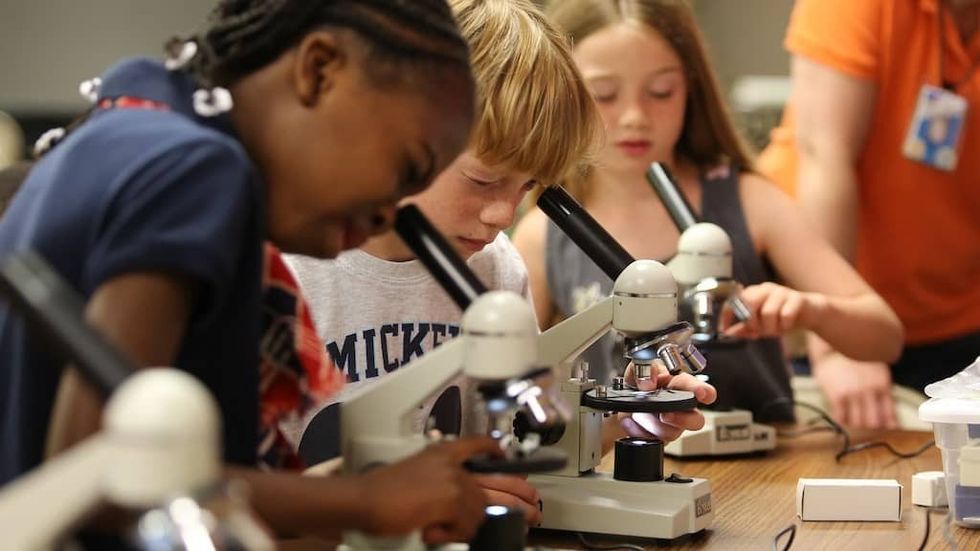
Dubinski chaired the Association of Science and Technology Centers from October 2019 until October 2021. In this role, he helped galvanise them and then guide them through the pandemic:
“We really all worked together to get through the COVID crisis and its associated issues,” he says. “We continue to look at other things like science misinformation and climate change on a global scale, discussing how we can all work together.”
Countering misinformation
Misinformation is insidious and damaging, he comments:
“It's devastating, in my mind, where we're at right now. We’d be in a very different place if people really understood the facts around issues such as COVID and climate change; if there were a trusted source for that information. The growth of the internet and a variety of different quote-unquote ‘news sources’ are having a damaging effect on the impact of science. At the end of the day, we need to confront that head-on for the future of the world.”
Misinformation is hard to fight:
“The way you communicate with people is extremely important,” he says. “We've seen this over the last couple of years. You can't give up in terms of communication. But you also can't talk down or ridicule people, because that puts them in a defensive mode. You have to work with them.
"Simplicity in communication is important. We have seen, from not only the scientists on our staff, but also others that we work with, that if you can break information into three basic points, and continue to express those points, it makes a huge difference in terms of how you're able to work with people.
"We can't give up this battle of miscommunication. People can dig in their heels, but it’s up to us to find ways of reaching them. We’re doing that, in our building, and through our programmes and exhibitions.”
Innovative programming
Under Dubinski’s leadership, the Franklin Institute has found innovative ways of reaching new and under-served audiences.
“For our programmatic pieces, we work with people where they are. I’m a big believer in, the principle that if there are existing facilities, don’t duplicate them: partner with them. We work with libraries and community centres, existing facilities with existing staff, bringing our knowledge to them, helping them learn how to teach science, and providing them with materials."
"It’s been a phenomenal strategy, in terms of reach, and in terms of what we’ve been able to do, working with these educators, who then work with students in their area.”
Beyond that, he adds, there are professional development programmes not just for teachers, but for librarians, individuals that run community centres, and out-of-school partners.
“We have also amped up our digital presence through podcasts, video, and live online programming,” he says. “That has had some really interesting impacts in terms of, again, creating a broader international audience. Within our building, we have just closed our Harry Potter exhibition, which had amazing results for us here in Philadelphia.”
Harry Potter at the Franklin Institute
Harry Potter: The Exhibition, from Imagine Exhibitions, a leader in worldwide travelling exhibitions and entertainment and Warner Bros.Themed Entertainment, closed on 18 September 2022, after a record-breaking seven-month world premiere run.
“In terms of the reach, Potter saw people from not just all 50 states, but 45 countries. People came here to see Harry Potter. What is tremendous is that not only were they seeing Harry Potter, but on average they'd spend three and a half hours in the rest of the museum."
"As you walked around the museum, you’d see people in the bioscience galleries, the space galleries, the physics galleries, learning together, both as families and in groups. It was just truly amazing.
"That’s the way to draw people in who might feel, ‘Science? That’s not for me.’ Of course, as we all know, science and technology are all around them, from the phones they’re on to the food they eat. It’s our job to meet them where they're at, and bring them in to learn so they can make educated decisions based on what they do daily.”
Leap Into Science
The Franklin Institute’s informal science education programmes are a further initiative connecting people with science.
“The Leap Into Science programme has really been wonderful,” he says. “I have had the good fortune to go out to some of the libraries and community centres in this region and teach this combination of literacy and science."
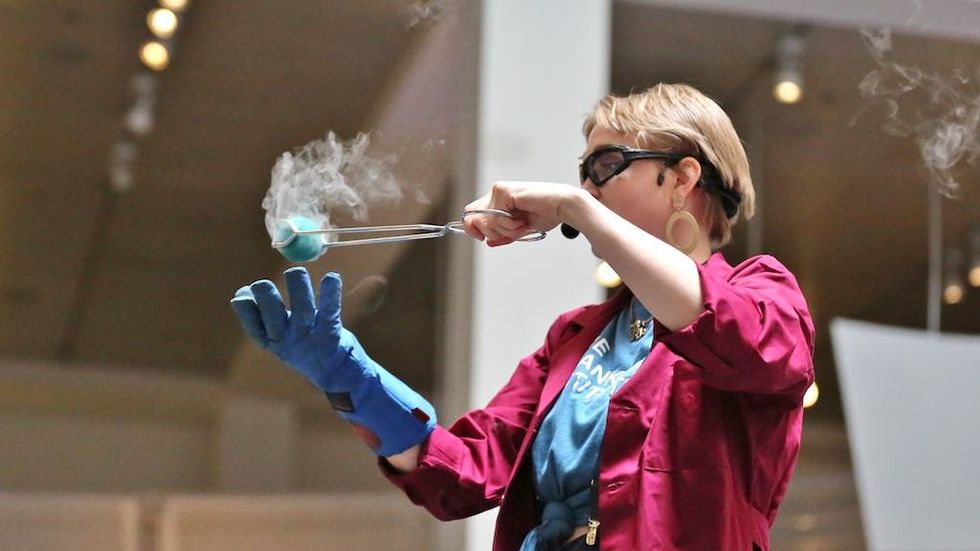
"Again, you’re where people are; in the neighbourhoods in which they live. These are programmes that they need, and there aren’t as many as we need.
"We got a NASA grant recently with which we're doing similar types of programmes, again working across the country and training amateur astronomers and folks in these community centres to help us teach astronomy, so that as we begin our march to the moon and, potentially, Mars, there's a real understanding of why we're doing that and what the benefits are.”
Communication is key
In terms of perspective, he adds:
“We can't stay in our own little bubbles, whether that means our countries or our cities. We live in a global environment. It's important to learn from others throughout the world and to work together to solve some of the problems that face us. When you hear something like the news that NASA’s Perseverance rover has found “a potential biosignature” of past life on Mars, as we heard recently, it wakes people up to the fact that we're all part of a much bigger system.”
“From our communication with potential visitors, we look at the best way to communicate information to them, and we keep working on that. That’s why communicators of science in the digital landscape are so important. Communication is a skill.
"What I love about our scientists at the Franklin Institute is that, first of all, they are so diverse and reflect the different people and backgrounds that make up our audience, which is so important, and secondly, they know how to communicate science effectively to an eight-year-old, to someone that may not have gone to college, to someone who went to college and was a liberal arts major.
"It's a skill, and it's one we have to continue to work on in our communication, as do all scientists, not just in the informal science realm, but in the formal science realm of universities, and even in government. Something the government has been learning, coming out of the pandemic, is that just because you're an expert, it doesn't mean you can communicate the science.”
A strategic plan
In 2016, the Institute engaged Lord Cultural Resources, the world’s largest cultural professional practice, to realise a 9-year strategic plan.
Dubinski says:
“We really took an outside-in approach, I would say. One of the things we did, as you know from Abby, was to elevate the position of chief experience and strategy officer. That is because we believe so much in the importance of the experience.”
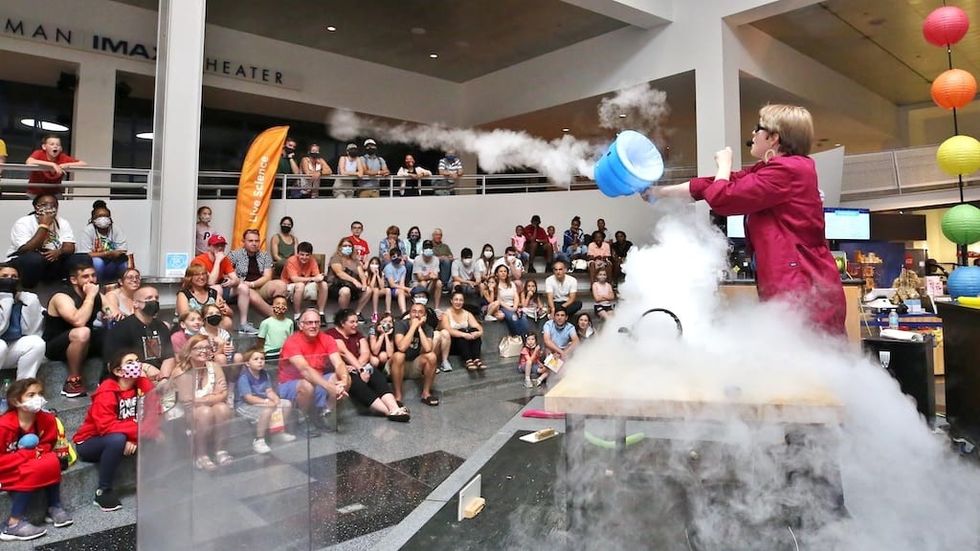
That the way people take in information has changed must be taken into account, as must the kind of experience people will be willing to come in and pay for:
“The expertise Abby brings to help us elevate the exhibition experience is key in prioritising the audience journey. We have to understand what the visitor wants to learn, how they want to learn it, and how we make those connections as we go forward. That’s why, as we did this, we worked really hard with school kids, teachers, families from diverse communities, business leaders, and politicians.
"We went out and listened more than we ever have. We wanted to understand how we can be impactful, and develop experiences that, as we go forward, are really engaging, and can be flexible. The old days when you'd build an exhibit and it would just stay static for years are over. In our industry, we can't do that, and we shouldn't do that.”
The Franklin Institute enters the metaverse
This perspective informs the strategy:
“New information is emerging at record speed. We have these new telescopes that are popping up, and the images are phenomenal. We have to be able to use those in real time, making sure those are part of the experience. You can't be showing things from 10 years ago, and expect your visitor to accept that.”
In short, he says:
“Our focus is, essentially, to continue to be relevant, immersive, engaging, and to continue to be flexible, as we go forward.”
An example of that flexibility is CurioCity (pronounced ‘curiosity’), an all-new, immersive Roblox experience, which launched in September 2022. TFI has joined forces with metaverse development studio MELON to create the experience. It is now available for free on the global online platform Roblox.
Designed for players of all ages, CurioCity turns astronomy and physiology into fun, immersive and interactive experiences. Players are taken inside the human body and through an exploration of space as they solve puzzles and complete tasks to escape and earn rewards and virtual badges.
Meeting the audience where they are
With CurioCity’s launch, the Franklin Institute becomes one of only a handful of science museums worldwide that have taken the leap into the metaverse, providing new opportunities to entertain and educate young learners worldwide.
“Metaverse platforms like Roblox are a logical next step for The Franklin Institute. They provide a highly relevant medium to connect with future audiences at a young age and pique their curiosity about science and technology,” says Bysshe.

“Through CurioCity on Roblox, we are reaching a community of young thinkers where they are already socialising, creating, and sharing experiences together with friends. We are introducing valuable insights and resources to these new audiences in a highly engaging and entertaining way.”
Exploration and discovery
When visitors enter CurioCity, they discover the many different ways to customize their avatars and the look of Benji-Bot, their trusted robot companion who will answer questions and provide information. They will then embark on various mini-games. This includes two timed escape rooms, one on a moon base and one dedicated to the human body.
Community members can work solo or collaborate with others to escape by completing puzzles and tasks, earning rewards, and collecting pet morphs and other virtual items as they learn scientific methods and facts.
“We designed this experience to be fun and to capture some of the thrills of exploration and discovery that have always spurred scientific progress,” Josh Neuman, co-CEO at MELON, explains. “Though it’s all about what works in Roblox, the Franklin Institute’s exhibits, collections, and overall philosophy inspired many of the elements we incorporated into the games, and we collaborated closely on the unique visual world we created.”
The metaverse is a new frontier that promises to expand the reach of museums and science centres. This adds to existing physical exhibits and virtual programming. For the last two centuries, the Franklin Institute has worked to present science and its discoveries in accessible ways that are meaningful to different audiences through programs, innovative exhibits, and, more recently—podcasts, videos, and other digital experiences grounded in science and technology.




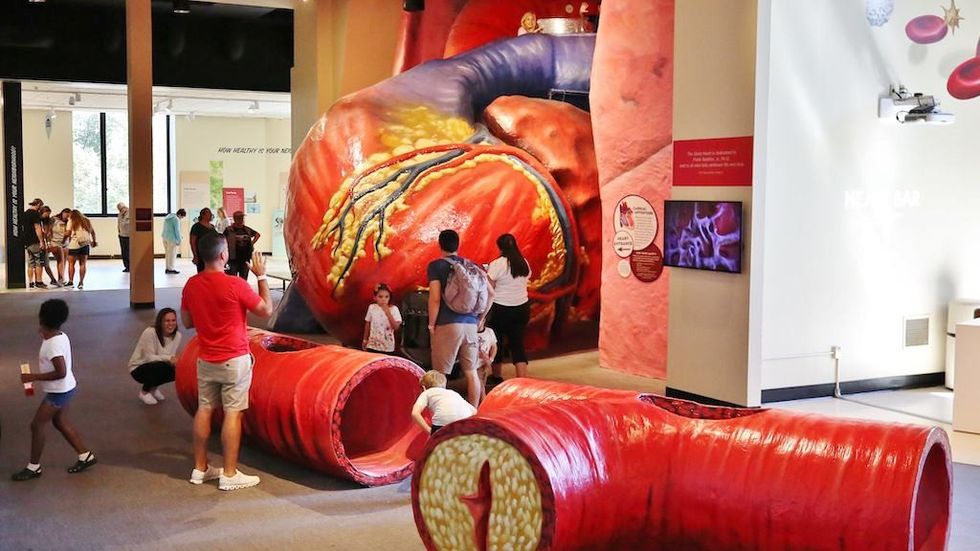

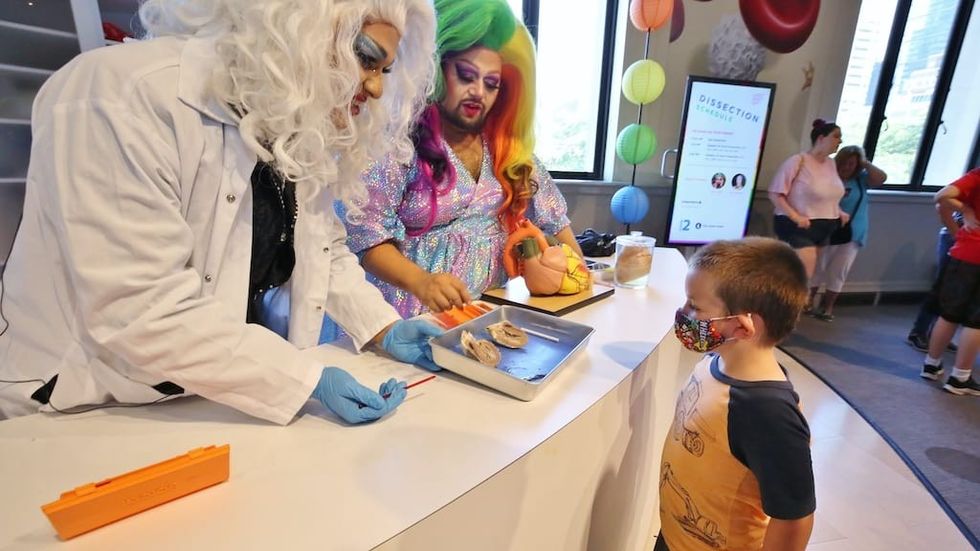
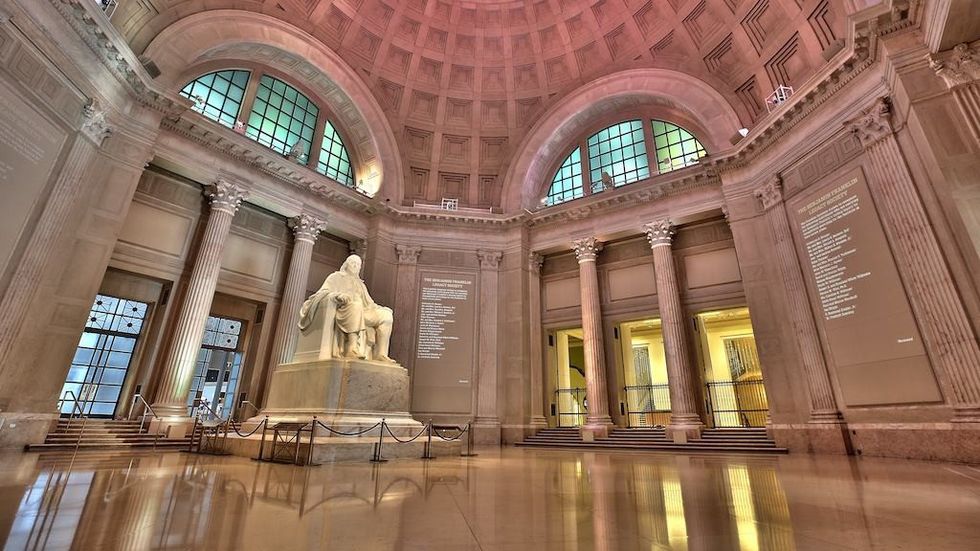
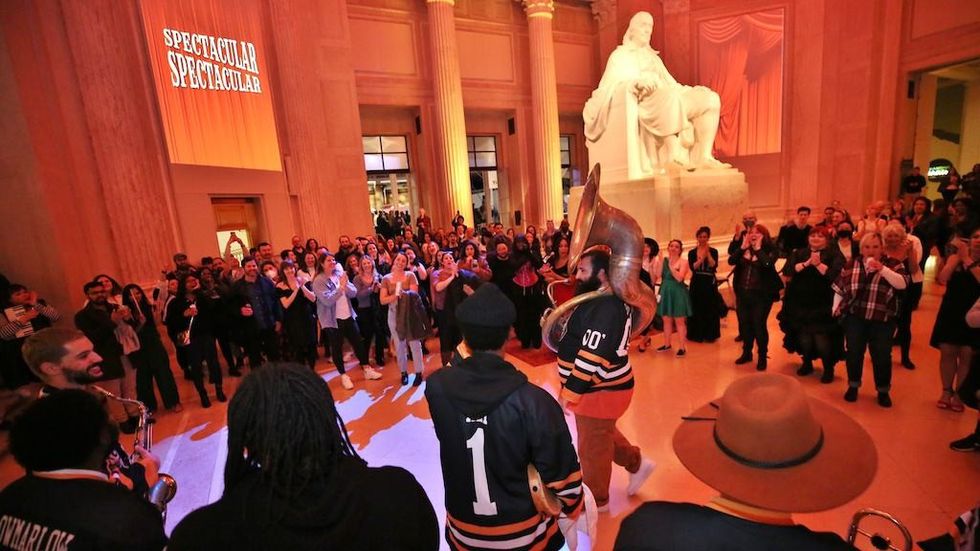
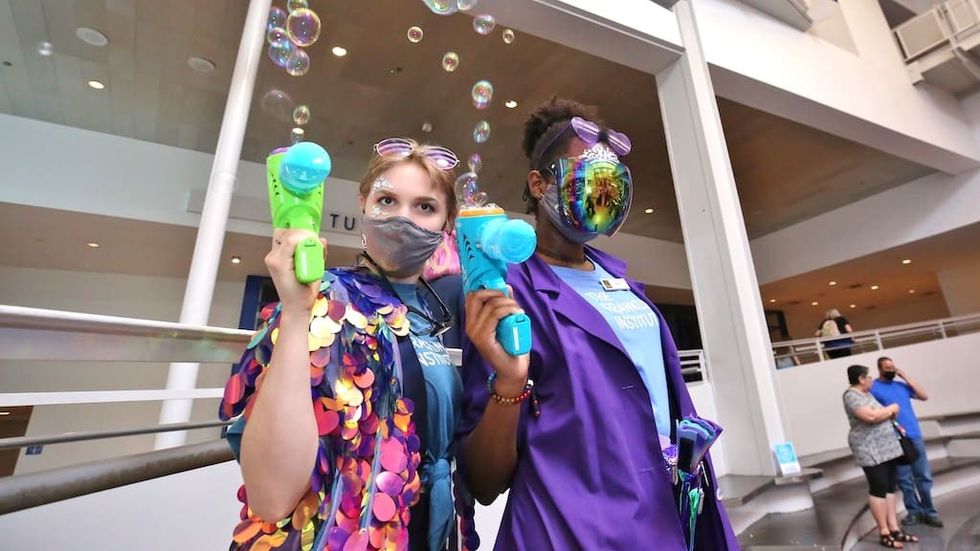

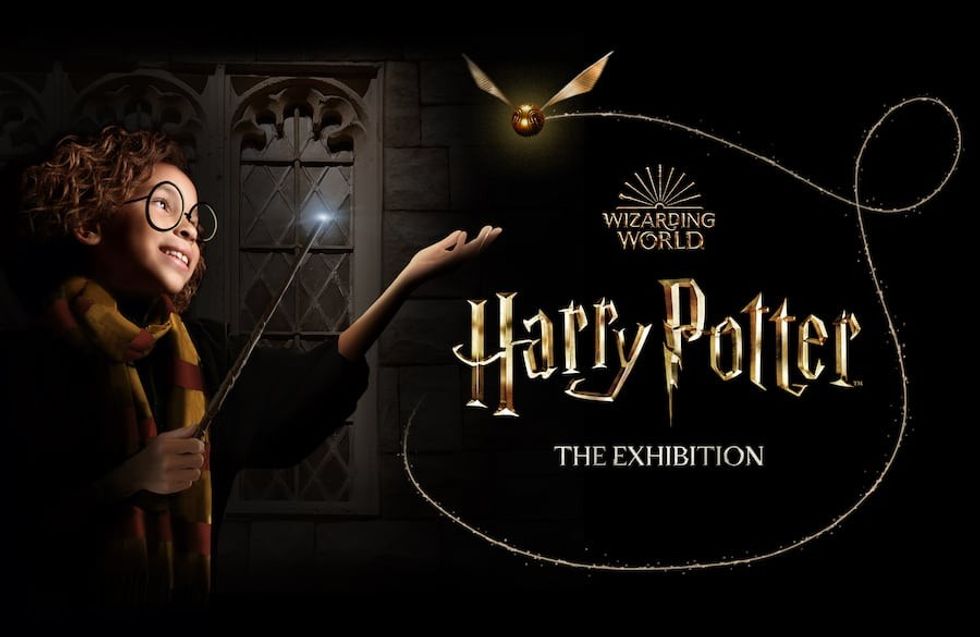
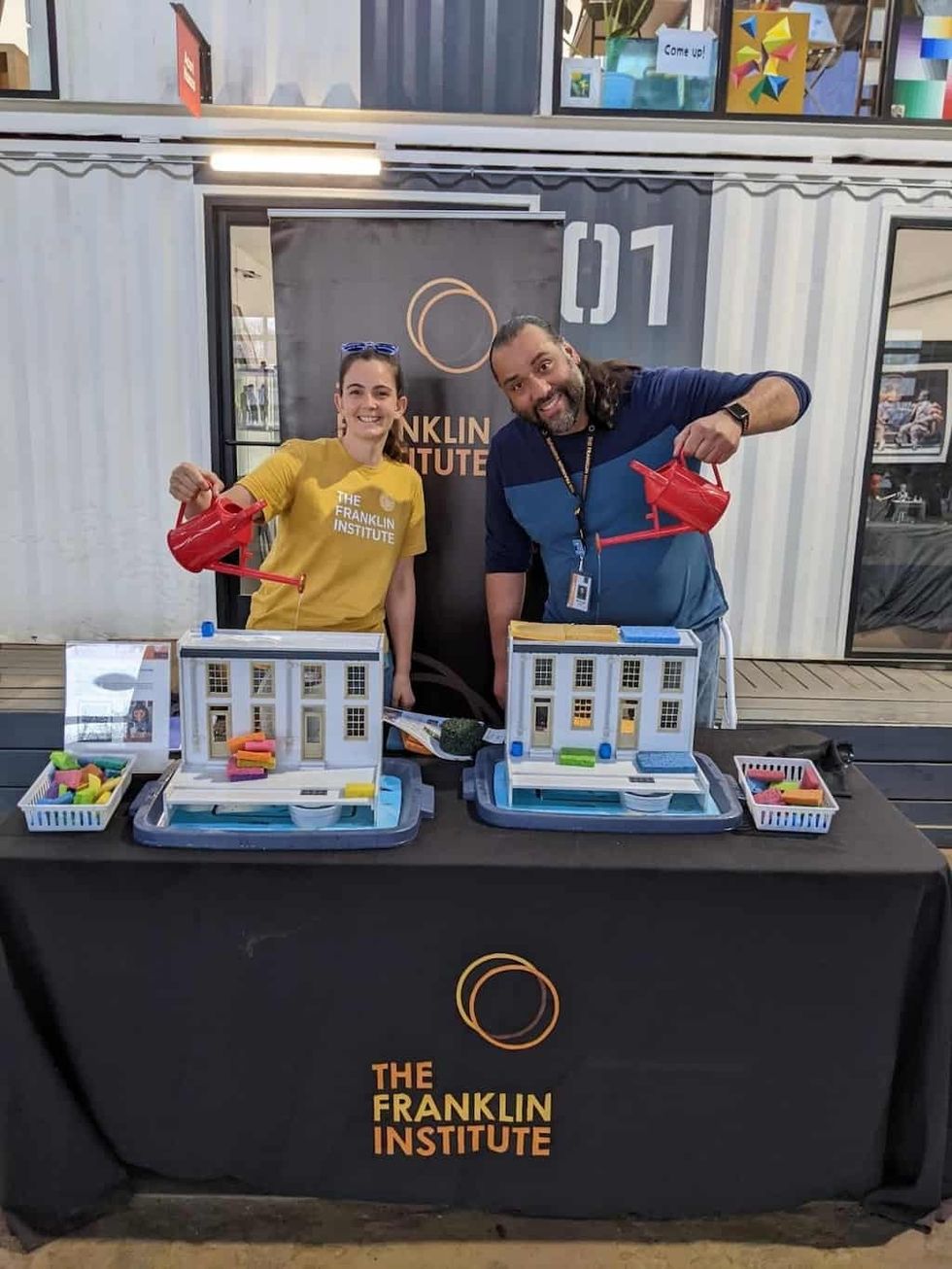
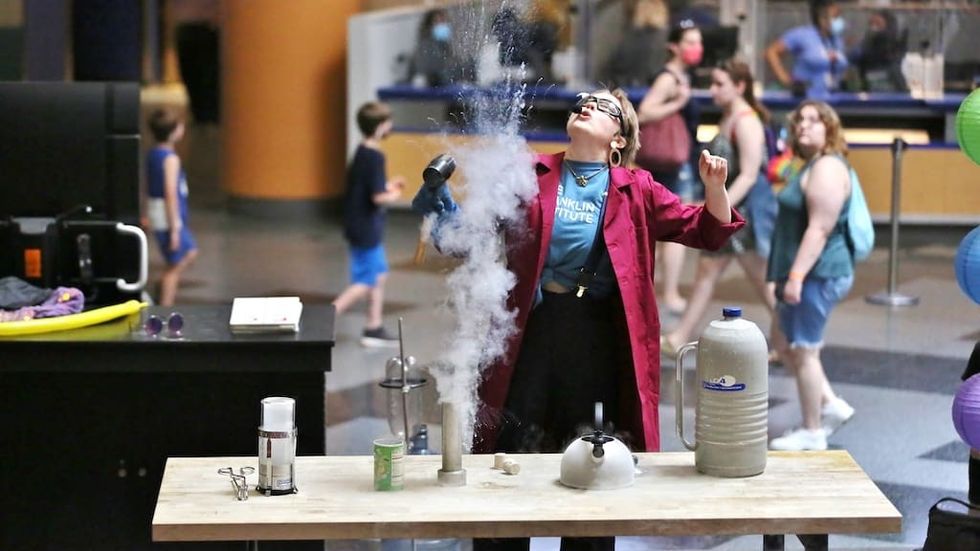



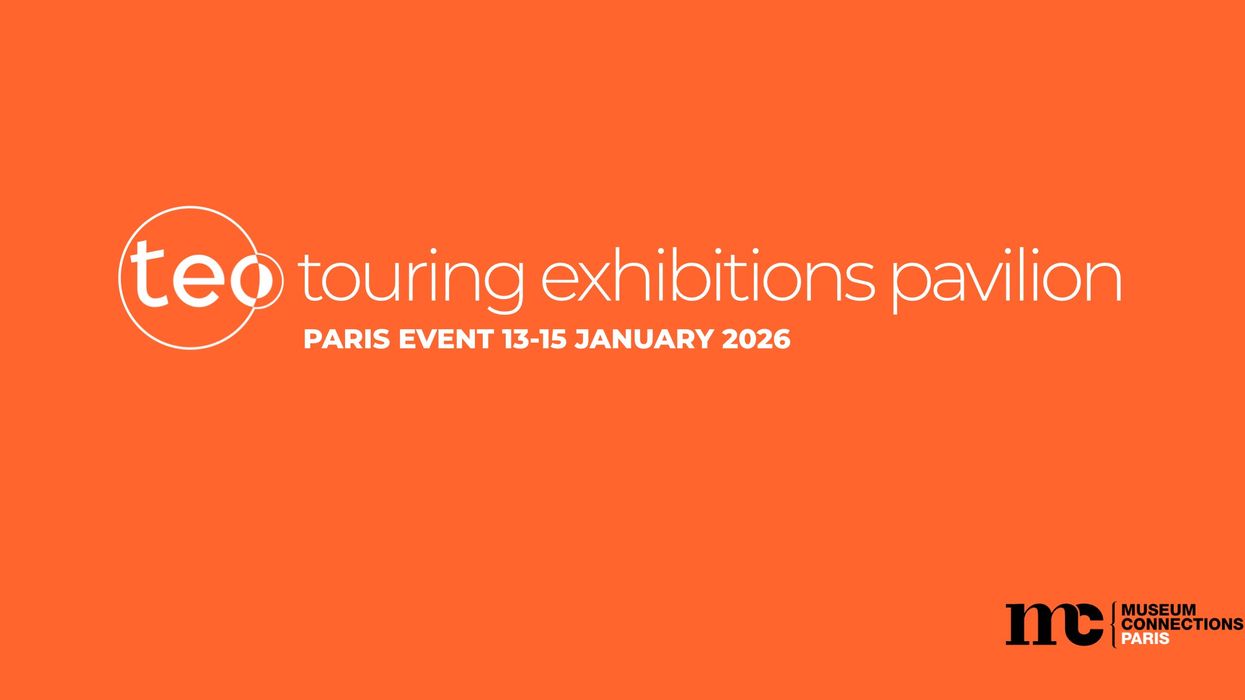
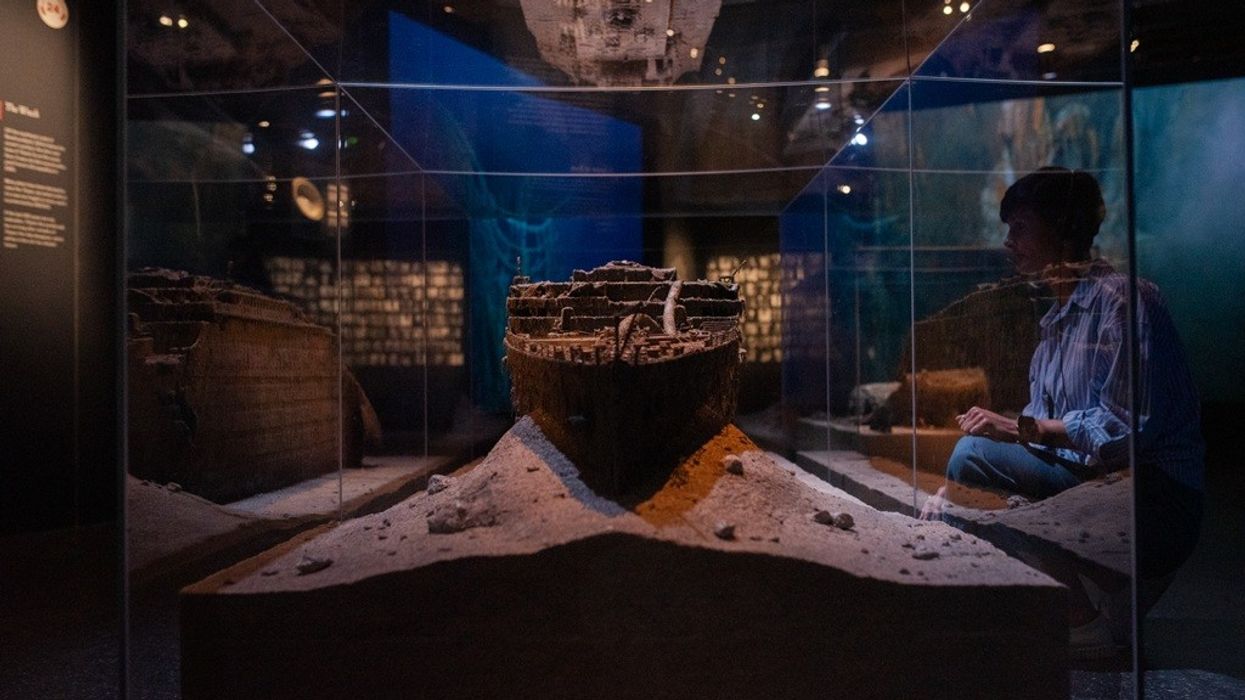
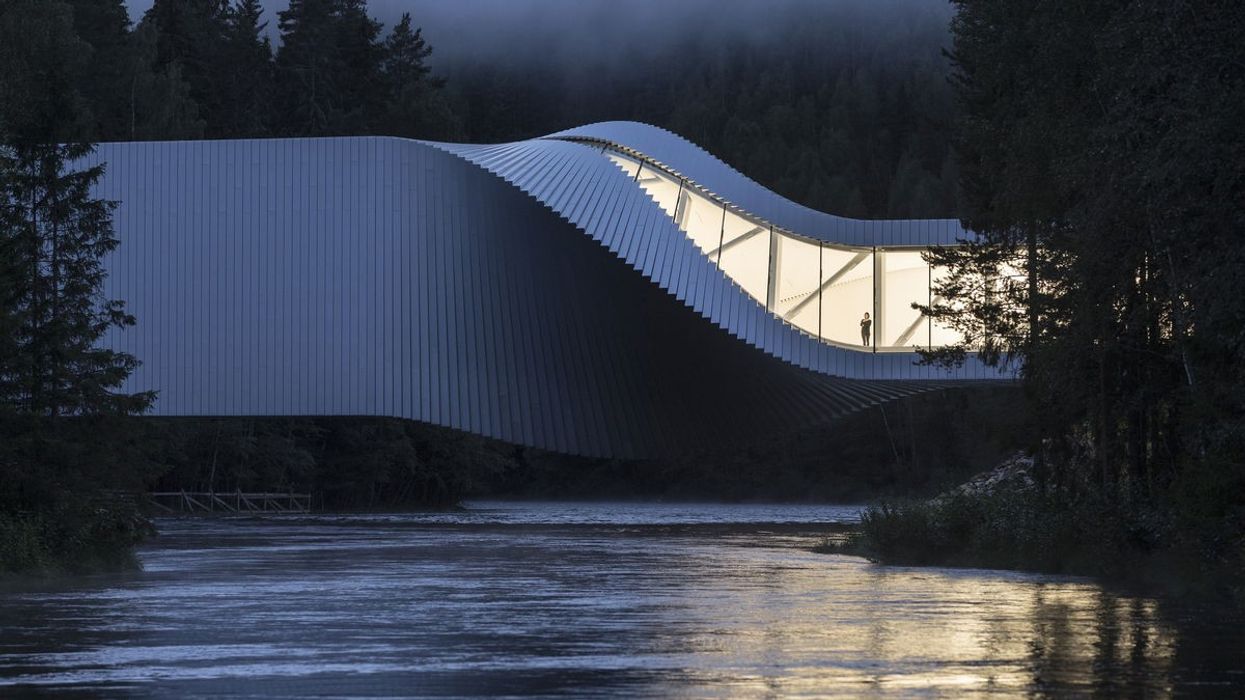

 TM Lim and Adam Wales
TM Lim and Adam Wales







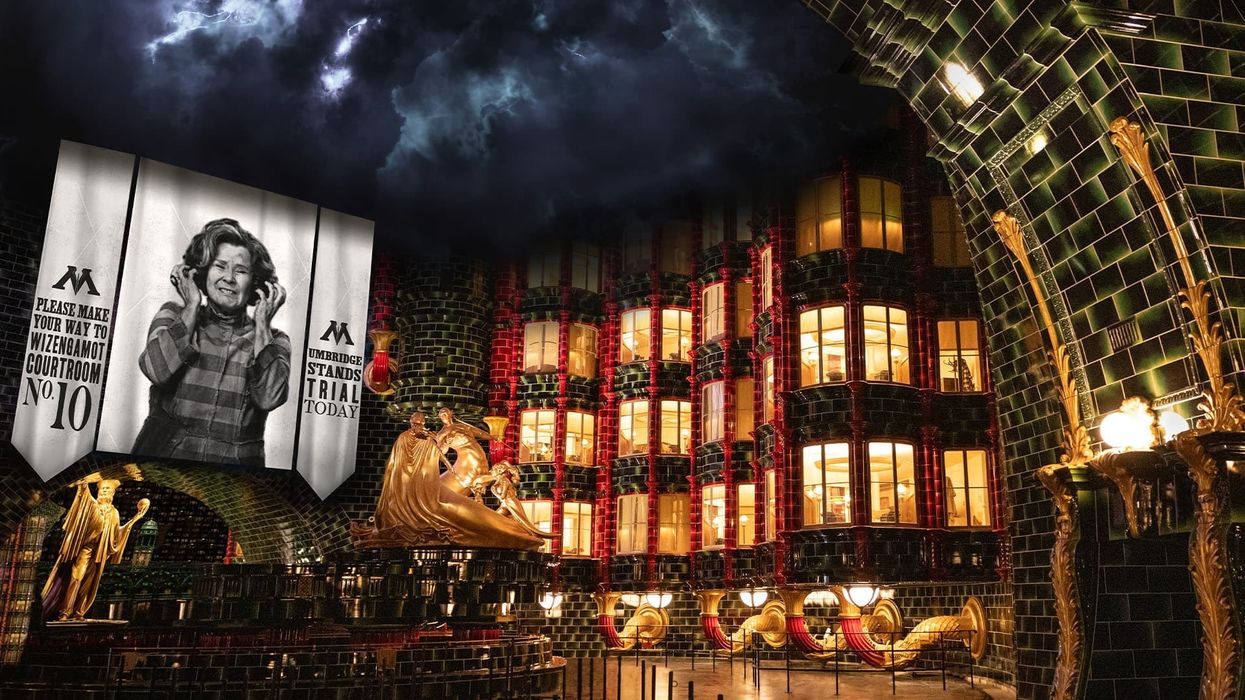

 Toby Harris
Toby Harris Hijingo
Hijingo Flight Club, Washington D.C.
Flight Club, Washington D.C.
 Flight Club Philadelphia
Flight Club Philadelphia Flight Club Philadelphia
Flight Club Philadelphia Bounce
Bounce Hijingo
Hijingo Bounce
Bounce
 Fernando Eiroa
Fernando Eiroa











 Nickelodeon Land at Parque de Atracciones de Madrid
Nickelodeon Land at Parque de Atracciones de Madrid Raging Waters
Raging Waters  Mirabilandia's iSpeed coaster
Mirabilandia's iSpeed coaster Parque de Atracciones de Madrid
Parque de Atracciones de Madrid Ferracci at the ribbon-cutting ceremony for Nickelodeon Land at Mirabilandia, with (left) Marie Marks, senior VP of global experiences for Paramount and (cutting the ribbon) Sabrina Mangina, GM at Mirabilandia
Ferracci at the ribbon-cutting ceremony for Nickelodeon Land at Mirabilandia, with (left) Marie Marks, senior VP of global experiences for Paramount and (cutting the ribbon) Sabrina Mangina, GM at Mirabilandia Tropical Islands OHANA hotel
Tropical Islands OHANA hotel Elephants at Blackpool Zoo
Elephants at Blackpool Zoo  Tusenfryd
Tusenfryd
 Andrew Thomas, Jason Aldous and Rik Athorne
Andrew Thomas, Jason Aldous and Rik Athorne







